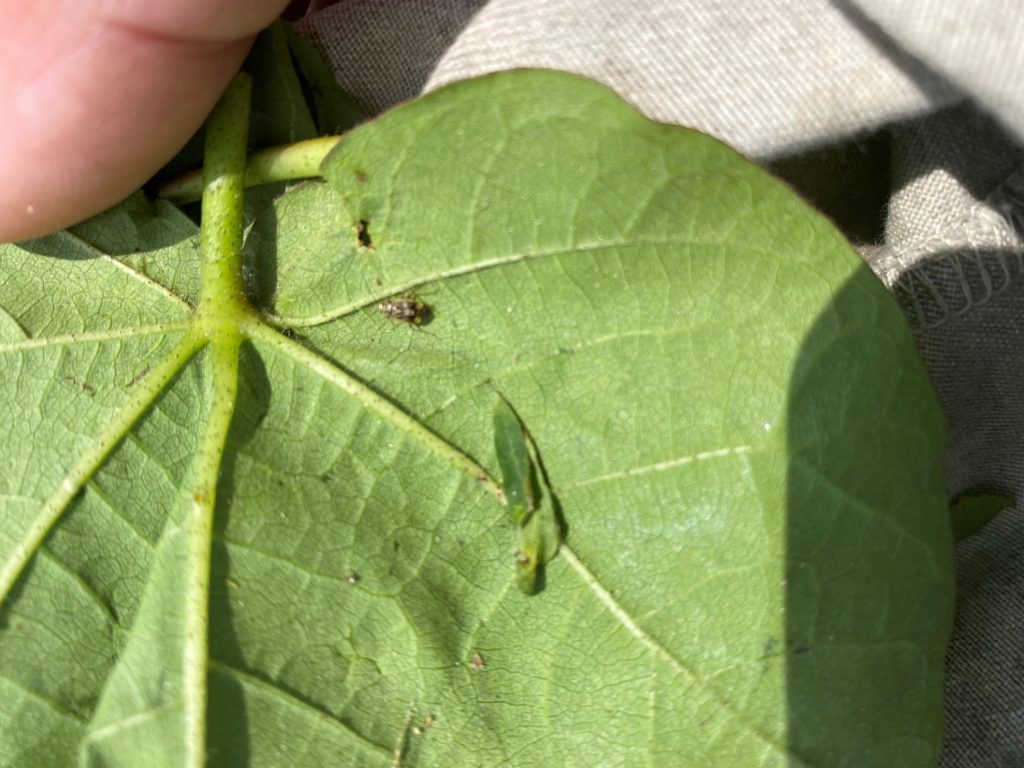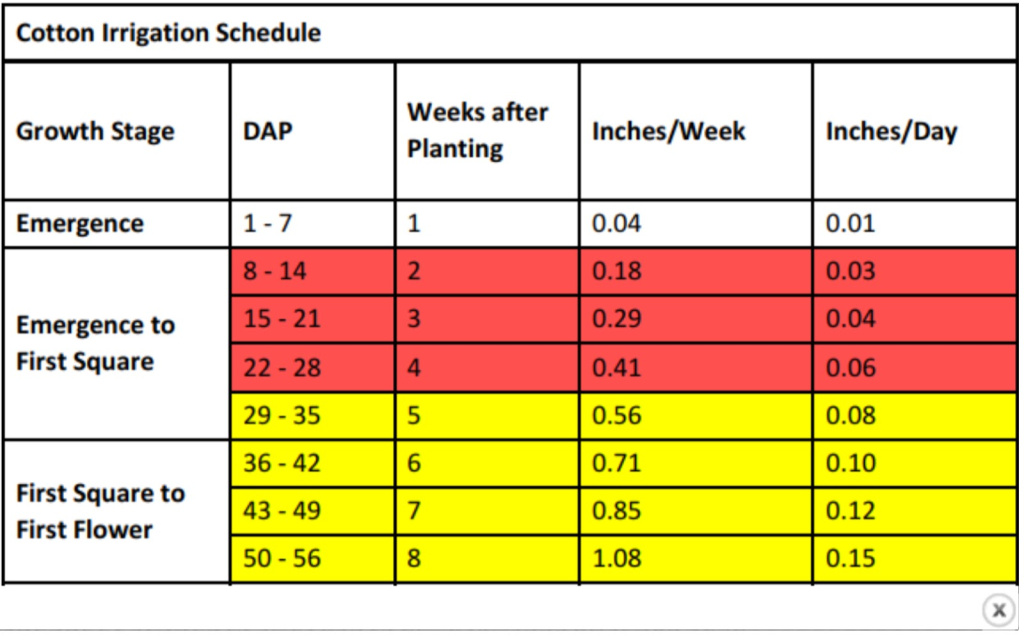Peanuts: Another exciting week in Colquitt County agriculture. It seems like evaluating peanut stands have been a common thing lately. The peanut crop ranges from just planted to 45 days old. I have received numerous comments from consultants, retailer and growers about how slow the peanut crop seems to be progressing.
According to Dr. Monfort, the cool weather also slowed the growth and delayed blooming across most of Georgia, and the cool wet weather also delayed planting by 1-2 weeks, causing a majority of the plantings to be in mid- to late-May, with about 15–25% being planted in June. Please keep these delays in mind as we go through the season, as maturity will be impacted. Also, the yield potential of peanuts planted in June will be reduced by 10–15% depending on the weather in September and October. June-planted peanuts will need a very warm fall to maximize yield potential.
Dr. Scott Monfort, UGA Peanut agronomist, gives us a brief update about the status of the peanut crop.
The peanut planting season has been cooler than average in South Georgia in 2023. In Tifton, GA from April 22 to May 6, daily high temps did not go above 81 F with low temps typically in the mid- to upper 50’s including below 50 F from May 2-4. While temps rebounded for most of the primary planting window during the first 3 weeks of May, another unseasonable dip occurred from May 22 to May 28 when the high temp did not even reach 80 F for an entire week. These temps caused delays in emergence for many peanuts, or very slow growth for young emerged peanuts in most fields.
With that said, the measured radiation (or amount of direct sunlight) received during May 2023 was relatively average. Thus, the drops in temperature were not as a result of cloudy/overcast/rainy days for the most part, it was just cooler-than-normal sunny days. The decreased heat units and delayed emergence should cause a resultant delay in blooming, which could cause peanut maturity to be
delayed this year.
As a frame of reference, since 2017, only two years had average maximum daily temperatures below 84 F and average minimum daily temperatures below 61 F. In both of those years, the majority of my research plots planted before May 15 were dug at 150-154 days after planting on average, based mostly on the peanut maturity profile board (but adjusted around weather). In the other four years during that span when temperatures were 84+ for a max and 61+ for a min, my early research plots were on average dug at 145-148 days after planting. Hence, the early season trend is that peanut maturity could be one to two columns (3-7 days) behind in maturity, with respect to the peanut maturity profile board.
There’s a long way to go and a lot can happen between now and harvest. But be sure to track maturity closely heading into harvest season this year, as the leading edge of the peanut maturity profile is likely behind this year compared to the average. For growers that typically pull the trigger on digging based on an average number of days after planting will most likely dig peanuts that have not reached full maturity and will lose both yield and grade that could be gained by leaving them in the ground a little longer than usual.
Cotton: The cotton crop ranges from just planted to 8 leaf stage. Growers need to be monitoring their fields for plant bugs because populations have been spotty. Scouts and producers need to be aware of sweep net and drop cloth thresholds for plant bugs. The thresholds are below.
Sweep Net and Drop Cloth Thresholds:
Third week of squaring through bloom: Drop Cloth: 3 plant bugs/6 row feet, Sweep Net: 15 plant bugs/100 sweeps
First 2 weeks of squaring: Drop Cloth: 1 plant bug/6 row feet, Sweep Net: 8 plant bugs/100 sweeps.
Insecticides recommended for plant bugs include Orthene, Bidrin, Admire Pro, Diamond, Vydate, Transform, and Centric.

Aphid pressure has been low in Colquitt County cotton. I ran across a couple fields this week with low populations. I have received a call or two about three cornered alfalfa hoppers (TCAH) in minimum tillage cotton. I remember when I was a county agent in Webster County many years ago, there was a field or two behind wheat that was impacted by TCAH. If they are threatening the stand then control my be needed but there is no established threshold that I have been made aware of in cotton. According to the Cotton Pest Management Newsletter (May 2003), nymphs and adults may feed by random punctures, but often larger nymphs and adults girdle plant stems and petioles by a series of stylet punctures circumscribing the stem or petiole. Nymphs and adults are often found feeding near the girdles. Main stem girdling may result in plant mortality or plants tipping over at the “girdle”. Nymphs have 12 pairs of prominent projections, or spines, along the top of the body. Smaller nymphs range in color from nearly transparent to light green. Larger nymphs are generally green but may occasionally be brown. Adults are usually green but may occasionally be brownish. Control options for TCAH include acephate or pyrethriods. If you have questions, please contact your local county extension agent. Other information on this subject is below.

How much do we need to irrigate early season cotton: According to Wes Porter, UGA Irrigation Specialist, Based on planting observations and where most of the crop is, most farmers should fall within the first square to first flower stage (or the yellow highlighted area) throughout the month of June.

Corn:
As of today, there is still no southern corn rust, tar spot, or soybean rust found in Georgia or in neighboring states. The area corn crop is approaching the VT-blister stage of development. Stinkbug populations have been low. Irrigation requirements range from 0.23 inches for 10–12 leaf corn to 0.33 inches a day for blister-stage corn. Late-season nitrogen applications have been a topic of discussion. Nitrogen applications after pollination are not recommended unless a severe nitrogen
deficiency is detected.


Other references:
Peanut Scout Handbook –https://peanuts.caes.uga.edu/content/dam/caes-subsite/peanuts/docs/peanut-scout-handbook.pdf
Reference Guide to Common Pests and Predators in Georgia Cotton – https://secure.caes.uga.edu/extension/publications/files/pdf/C%201161_8.PDF
